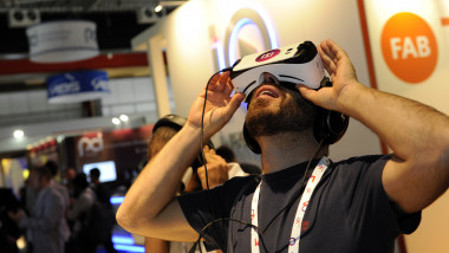Article Explains That 'Super Wi-Fi' is not Wi-Fi
The recent approval of TV band white space use in a very limited area around Wilmington, N.C. coordinated by database administrator Spectrum Bridge has resulted in a large number of articles touting TV band white space as "Super Wi-Fi." Sascha Segan, writing on PCMag.com, says 'Super Wi-Fi': Super, But Not Wi-Fi includes a quote from Wi-Fi Alliance marketing director Kelly Davis-Felner, who says "Wi-Fi is a trademark, there is no such thing as 'Super Wi-Fi,' and white spaces is not Wi-Fi. This could cause confusion among consumers who may actually expect the technology to be Wi-Fi, and it isn't."
A Wireless Innovation Alliance spokesperson countered, "The term WiFi has always been a general term for the family of 802.11 protocols and products using these protocols. The term 'Super WiFi' is a verbal tool for conveying a thought or concept in an easy-to-understand way, such as when a child asks for a 'Band-Aid' for a boo-boo, and you give him or her a generic brand plastic adhesive."
Segan writes, "In other words, from a technical perspective this is no more 'super Wi-Fi' than Bluetooth is 'mini Wi-Fi' or Sprint's 4G WiMAX is 'mega Wi-Fi.'"
Chip-Based Credit Cards Easy to Steal
Wireless devices offer convenience, but you may not want wireless capability in your credit card. The reason is that a $50 device, available on eBay, can extract enough data from of these wireless cards to create magnetic stripped cards which can be used to purchase items or withdraw cash. Readers can obtain this information without your knowledge while the card is still in your wallet or purse. Concerned? Read Andy Greenberg's article Hacker's Demo Shows How Easily Credit Cards Can Be Read Through Clothes And Wallets on Forbes.com.
Wireless Power for Electric Cars
All-electric cars would probably be more popular if drivers didn't have to worry about the battery running down before they got home. Researchers at Stanford University have found a solution--power from loops embedded in the road transmitted to the car. The researchers use magnetic resonance coupling where both coils are tuned to resonate at the same frequency. The Stanford University news release Wireless power could revolutionize highway transportation, Stanford researchers say says the researchers are looking at ways to transfer 10 kW of power with an efficiency of 97 percent, with the remaining three percent dissipated, ideally as heat, not as interference to other in-car electrical systems.
The article didn't mention the frequency bands but much lower power wireless devices for wireless device charging use frequencies in the low HF band. Since there is room for a larger loop on the car and in the road, I would expect this technology to use somewhat lower frequencies.
The professional video industry's #1 source for news, trends and product and tech information. Sign up below.

Doug Lung is one of America's foremost authorities on broadcast RF technology. As vice president of Broadcast Technology for NBCUniversal Local, H. Douglas Lung leads NBC and Telemundo-owned stations’ RF and transmission affairs, including microwave, radars, satellite uplinks, and FCC technical filings. Beginning his career in 1976 at KSCI in Los Angeles, Lung has nearly 50 years of experience in broadcast television engineering. Beginning in 1985, he led the engineering department for what was to become the Telemundo network and station group, assisting in the design, construction and installation of the company’s broadcast and cable facilities. Other projects include work on the launch of Hawaii’s first UHF TV station, the rollout and testing of the ATSC mobile-handheld standard, and software development related to the incentive auction TV spectrum repack. A longtime columnist for TV Technology, Doug is also a regular contributor to IEEE Broadcast Technology. He is the recipient of the 2023 NAB Television Engineering Award. He also received a Tech Leadership Award from TV Tech publisher Future plc in 2021 and is a member of the IEEE Broadcast Technology Society and the Society of Broadcast Engineers.
